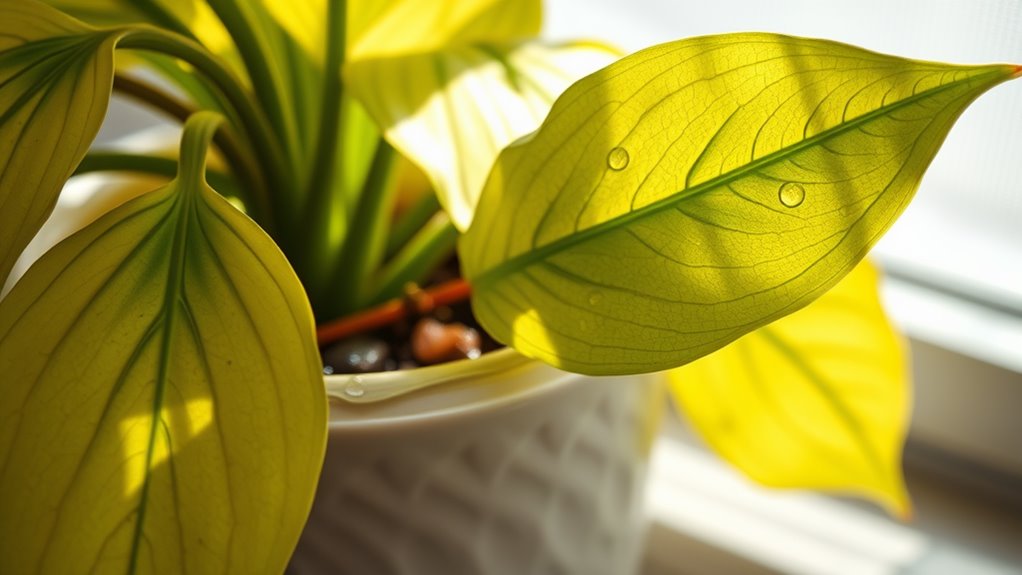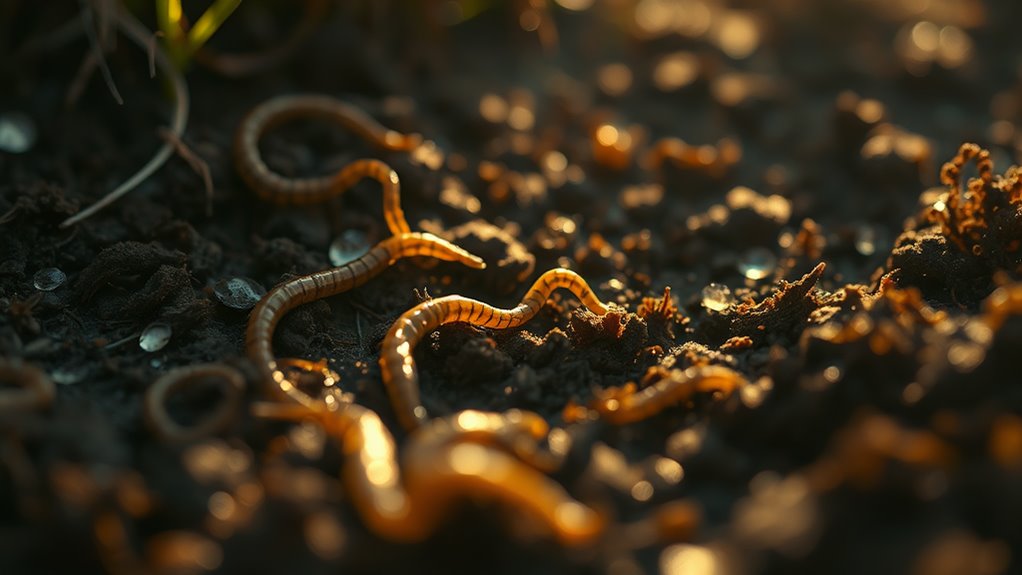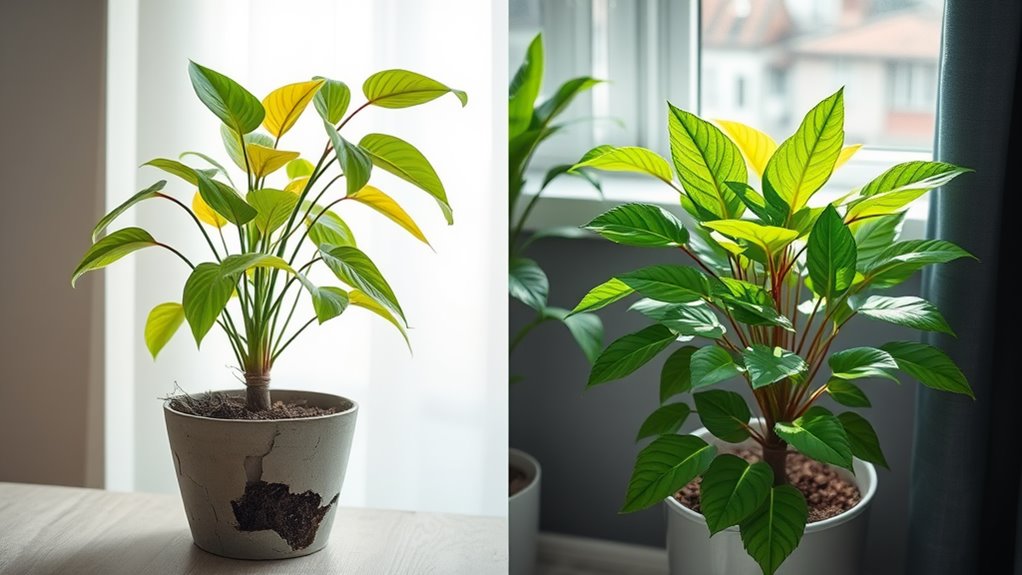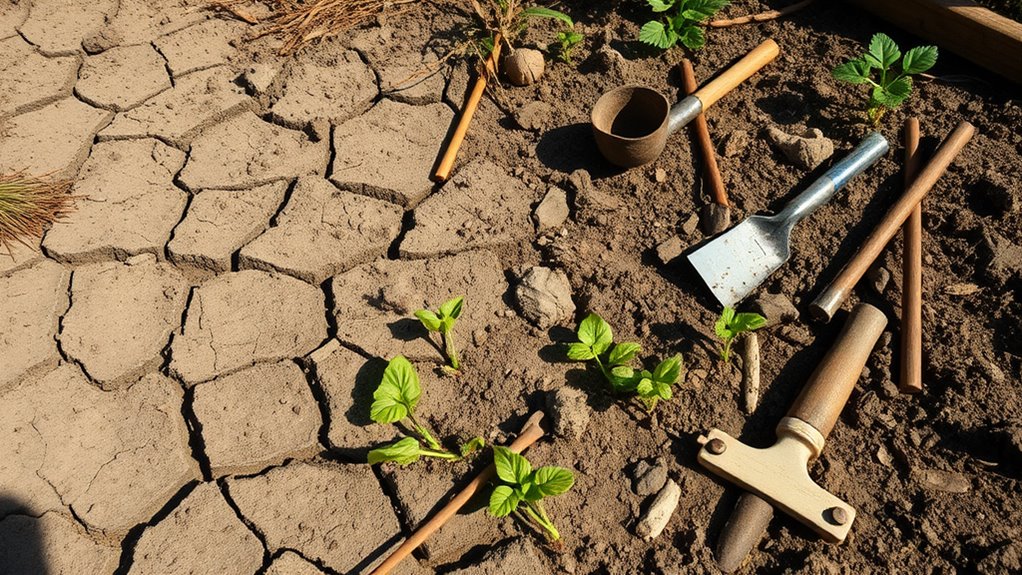Are You Killing Your Plants With Love. The Truth About Watering
You’re overwatering your plants without meaning to, causing yellowing leaves, wilting, and root damage that suffocates them and invites diseases. By ignoring soil moisture and plant-specific needs, you’re disrupting vital oxygen uptake and nutrient absorption. Start checking soil before watering and direct it to the base for healthier roots. Explore these strategies further to master balanced care and keep your greens thriving.
Key Takeaways
- Overwatering often kills plants by suffocating roots and promoting fungal diseases.
- Yellowing leaves and wilting in moist soil are key signs of overwatering.
- Excess water impairs nutrient uptake, stunting growth and causing plant decline.
- Always check soil moisture before watering to avoid overhydration.
- Use well-draining pots and direct water to roots for healthier plants.
Common Overwatering Mistakes
When you overwatering your plants, you’re suffocating their roots by displacing essential oxygen in the soil, which often leads to root rot and nutrient imbalances. Additionally, employing watering recovery techniques can help restore the plant’s health by improving soil drainage and aeration.
One common overwatering mistake you make is sticking to a rigid watering schedule, ignoring varying plant needs based on species and environment. For example, you might flood drought-tolerant plants like cacti, disrupting their natural adaptations.
Another error is neglecting soil type; heavy clay soils drain poorly, exacerbating waterlogging.
To sidestep these overwatering mistakes, you always check soil moisture first and adjust based on seasonal changes, promoting healthier root systems.
Recognizing signs of overwatering early can help prevent long-term damage and ensure your plants thrive.
Signs of Overwatering in Plants
Recognizing the signs of overwatering early helps you protect your plants from lasting damage.
You’ll often spot yellowing leaves first, as they signal waterlogged roots. Watch for wilting despite moist soil, where roots can’t breathe properly. Mushy stems or a foul odor from the pot indicate potential issues.
If leaves drop unexpectedly or growth stalls, it’s a red flag. Always check soil moisture before watering—poke your finger in to feel if it’s damp. In extreme heat, proper watering techniques are essential to prevent overwatering while keeping plants hydrated.
These visual and tactile cues let you act quickly, adjusting your routine for healthier plants.
To enhance your watering practices, focus on addressing common mistakes that can lead to overhydration and hinder plant vitality.
Effects of Excess Water on Plant Health
Excess water disrupts your plant’s root systems, limiting oxygen uptake and fostering harmful pathogens that lead to root rot.
This suffocation impairs nutrient absorption, causing leaves to yellow and wilt as essential minerals like nitrogen become scarce.
You’re hindering photosynthesis by depriving roots of oxygen, which slows energy production and stunts overall growth.
Additionally, the soggy soil creates an ideal breeding ground for fungi and bacteria, weakening cell structures and increasing disease susceptibility. Moreover, this environment can also invite common garden pests, emphasizing the need for natural pest control.
Over time, these effects compromise the plant’s vitality, leading to irreversible damage and potential death if conditions persist.
To mitigate such risks, always prioritize proper soil preparation to ensure adequate drainage and aeration in your garden beds.
Tips for Proper Watering Techniques
While overwatering can devastate your plants, mastering proper techniques helps maintain their health and vigor.
To start, you check soil moisture by inserting your finger an inch deep; if it’s dry, water is needed. Direct water to the base, avoiding leaves to prevent fungal diseases, as this keeps foliage dry and healthy.
Use a watering can with a fine rose for even, gentle application, ensuring deep root penetration. Opt for room-temperature water to avoid root shock, and always verify that pots have adequate drainage holes for excess water escape.
These steps promote optimal hydration scientifically. Additionally, implementing an innovative watering schedule can maximize efficiency and further enhance plant health.
Moreover, incorporating watering timing strategies can help maximize plant growth while minimizing water usage.
Maintaining the Ideal Watering Balance
Achieving the ideal watering balance requires you to fine-tune your routine based on each plant’s specific needs. This involves assessing soil moisture, plant type, and environmental factors to prevent overwatering or underwatering, which can stress roots and hinder growth. Rethinking your daily watering practices can reveal surprising benefits and help address common misconceptions about plant care.
Scientifically, aim for consistent hydration that supports transpiration without excess.
To maintain balance, follow this approach:
- Test soil moisture weekly using a reliable meter to ensure it’s neither too dry nor saturated.
- Match watering to plant requirements, like succulents needing infrequent drinks versus tropical plants craving regular moisture.
- Factor in climate variables, such as temperature and humidity, which influence evaporation rates.
- Monitor plant responses closely, adjusting your schedule based on signs like drooping leaves or slow growth.
For enhanced plant health, incorporate deep watering to ensure soil moisture penetrates deeply to the roots, supporting optimal growth with less frequent watering.





